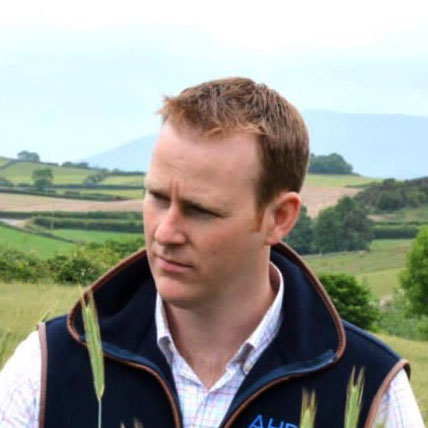This has to be the first year in a long while we’ve got “the rain in May to fill the barns with grain and hay”, as they say.
We’ve had 3in this month and it has allowed crops to explode with growth. Winter barley has flowered and wheat is splitting the boots nicely.
Mascani oats are still chilling out and the panicle has a good bit to go yet before it appears.
See also: How this arable farm became carbon negative and cut costs
About the author
Richard Orr
Richard Orr farms 160ha in Downpatrick, Northern Ireland, with his wife and parents. He is an AHDB Monitor Farmer. Crops include wheat, oats, barley, potatoes and vegetables. The business also has a farm shop and beef cattle

We and three other farms have an oat trial with Whites Oats comparing Mascani, Husky and Isabel – all winter-sown side by side in 9m strips.
My goodness, Husky can produce grains. The panicles are huge and I feel if I had 100 acres of it I’d be praying very hard for no heavy rain.
Isabel didn’t germinate as well as the others, but winter kill means it has a similar plant count and good panicles splitting out now.
Mascani has tillered far more and is like a brush, but much shorter and two weeks behind the others.
Going on experience with Mascani, it is going to have to produce lots of smaller panicles to rival the grain count of the others.
However, I don’t want to draw too many conclusions as quality is a major factor when the analysis comes back from Whites, so we’ll wait to see how they grade out.
But if the right weather is there to fill the Husky it looks good.
It does, however, need a good fungicide programme and a lot of mildew has appeared in past week. The plots will receive a second spray now that they are headed out.
Fertiliser applications are all complete and it’s going to be an interesting one to watch, as I have quite a lot of variations in applications on the wheat.
The stand-out so far is the field that didn’t receive any fertiliser until the middle of April.
Traditionally, we’d apply first application 30kg/ha in mid-March when doing the second application on winter barley.
However, the crops came through winter well, with ample tillers, so there was no need to push them.
It currently looks the best field and I think it’s because the plant had to work for itself for that month searching for nutrients and putting down roots.
It did look paler in colour, but since it’s received its nitrogen it has looked the greenest of all and very healthy.


